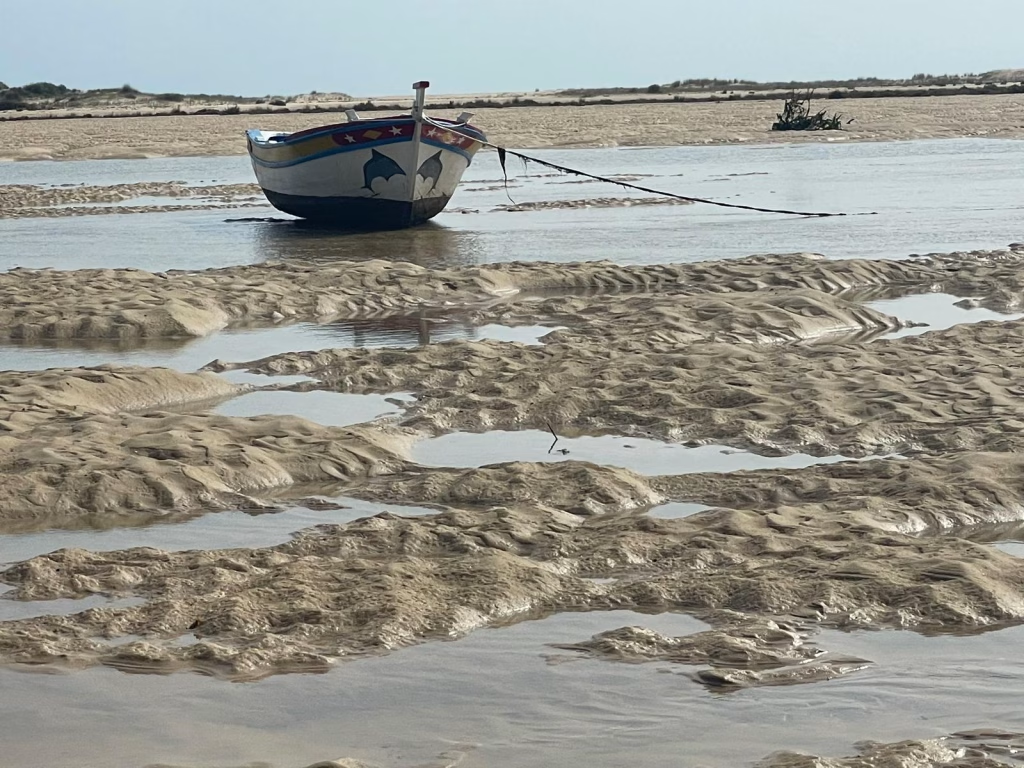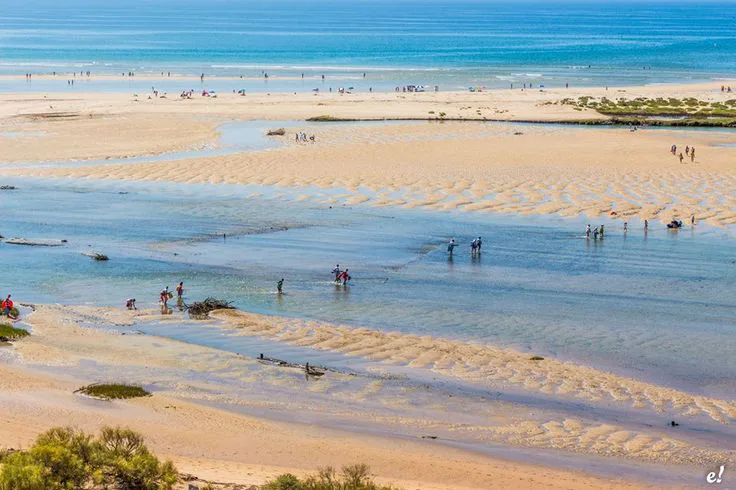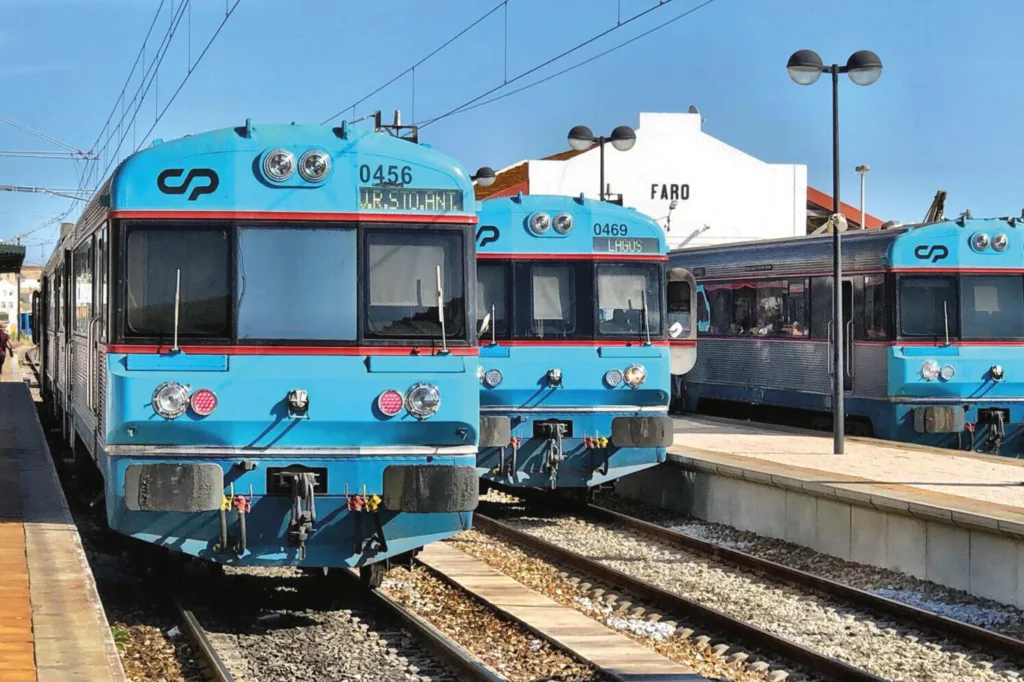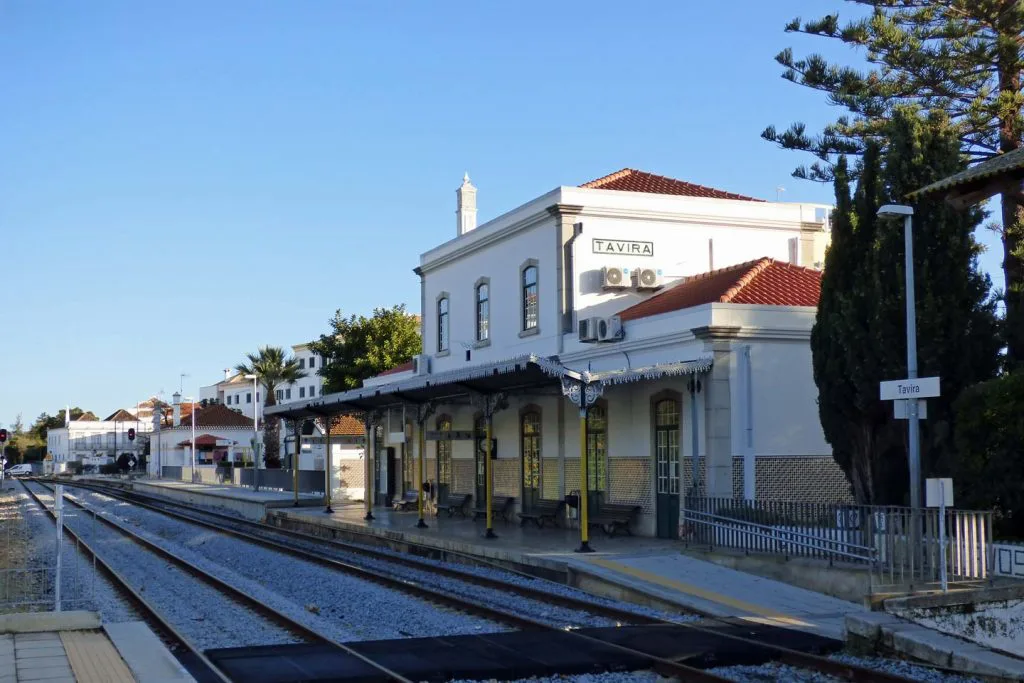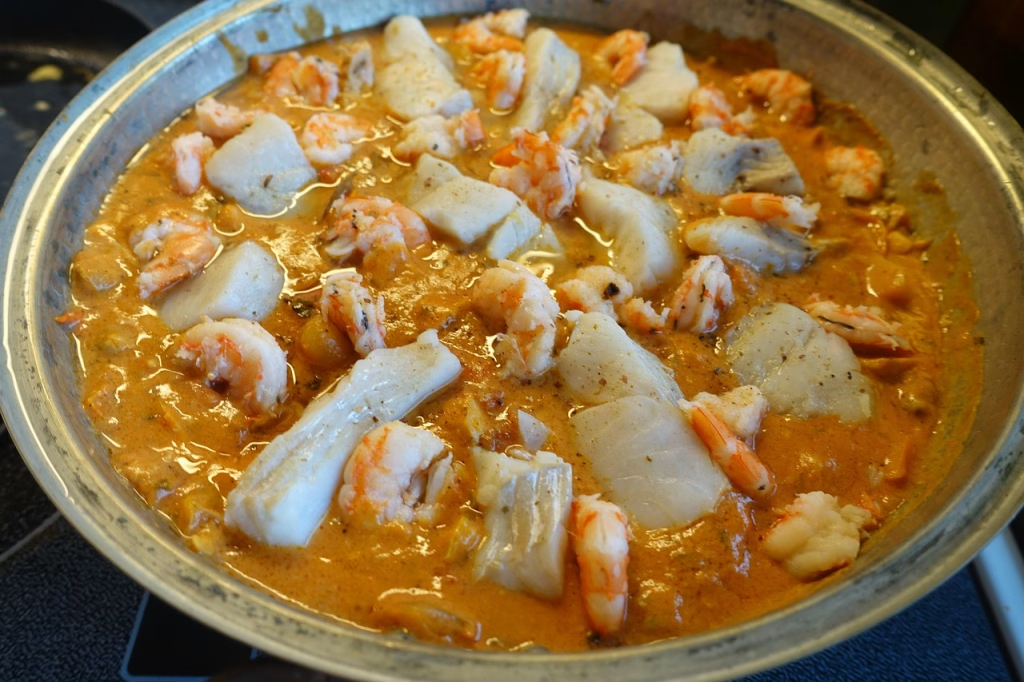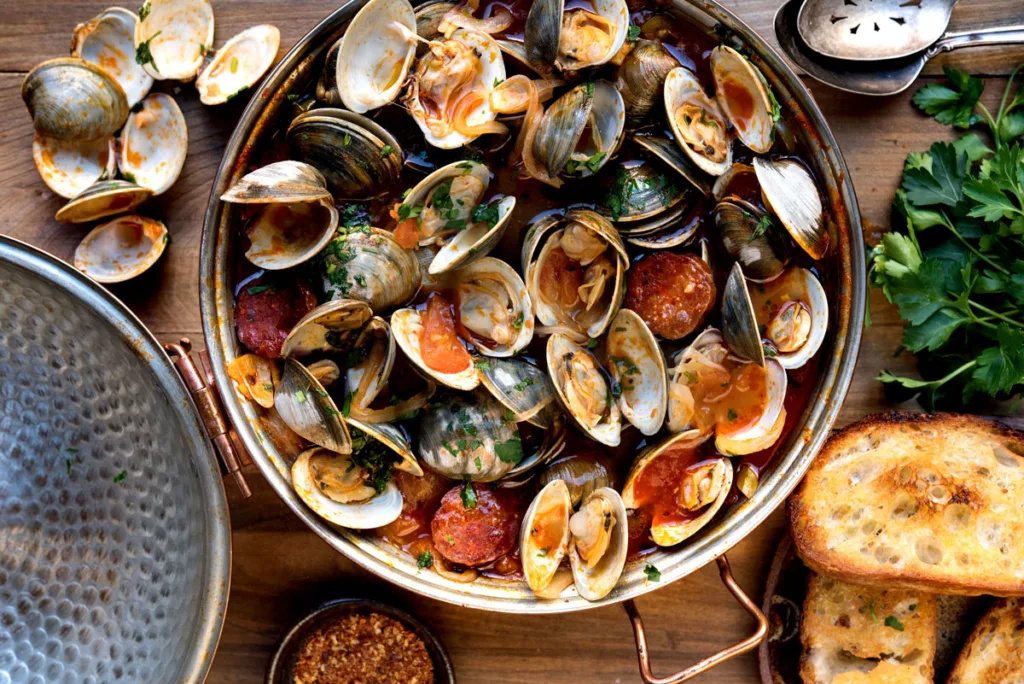Looking for a peaceful escape from Tavira? Head east for a day trip to Cacela Velha —a tiny, whitewashed village perched high above the Ria Formosa lagoon. It’s just 15 minutes away but feels like stepping into another time.
🚍 Getting There – By Bus, Bike or Car
- By bus : Take Vamus Bus 67 (Tavira–Vila Real de Santo António) and get off at Vila Nova de Cacela . From there, it’s about a 20-minute walk (1.6 km) to the village.
- By car : Just a 15-minute drive (12 km) east along the N125. Free parking is available just outside the village gates.
- By bike : The scenic Ecovia Litoral do Algarve bike trail passes near Cacela Velha, making it a great eco-friendly cycling destination.
🏘️ Discovering Cacela Velha
This serene village sits atop a cliff with panoramic views of the Ria Formosa Natural Park and the Atlantic beyond. It’s tiny—just a few houses, one cobbled street, and silence interrupted only by birdsong and distant waves.
- Visit the Igreja de Nossa Senhora da Assunção , a 16th-century church rebuilt after the 1755 earthquake. It’s modest inside, but the terrace outside offers sweeping views over the water.
- Walk along the edge of the Fortaleza de Cacela (closed to the public), a military structure dating to the 18th century and built on earlier Moorish ruins. From here, you’ll get postcard-perfect photos of the sandbanks and islands of the Ria Formosa.
🏖️ Praia da Fábrica – The Beach Adventure
Down below Cacela Velha lies one of Portugal’s most beautiful beaches: Praia da Fábrica . But it’s not a simple stroll:
- To reach the beach, go to Sítio da Fábrica (a 10-minute walk from Cacela Velha) where small boats ferry visitors across the shallow lagoon. It costs around €1.50 return per adult .
- At low tide , you can walk across the sandbanks to reach the beach—but be extremely cautious . The area is known for strong currents and unmarked channels , and multiple rescue operations have taken place in recent years (HuffPost ES).
🚲 The Scenic Route – Cycling from Tavira
For the active traveller, rent a bike at Abílio Bikes in Tavira and follow the Ecovia do Litoral eastward. You’ll pass orange groves, salt pans, and sleepy villages before arriving at Cacela Velha. It’s around 13 km one way , mostly flat and low-traffic—ideal for a sustainable adventure.
🍴 Where to Eat
There are only a couple of options in Cacela Velha:
- Casa Velha – A charming, family-run spot offering grilled fish, clams, and Algarve-style tapas. Reservations recommended in summer.
- Restaurante Marisqueira Fábrica do Costa – Located at the landing point in this casual seafood spot specialises in oysters, razor clams (lingueirão), cataplana, and grilled fish.
For more variety, head back to Cabanas de Tavira or of course Tavira itself.
📍 Optional Nearby Stops
- Cabanas de Tavira – A relaxed fishing village with a riverside boardwalk, traditional boats, and easy ferry access to Ilha de Cabanas beach.
- Vila Nova de Cacela – A small town inland from Cacela Velha with shops, cafés and a more lived-in feel.
🌍 Why This Day Trip is Worth It
- Authentic and untouched by mass tourism
- Rich in history and tradition
- Stunning landscapes and wildlife
- A great example of low-impact, slow travel
Whether you’re drawn by the sea air, the cobbled paths, or the peacefulness of a place where time really does seem to stand still—Cacela Velha is a gentle kind of magic.
